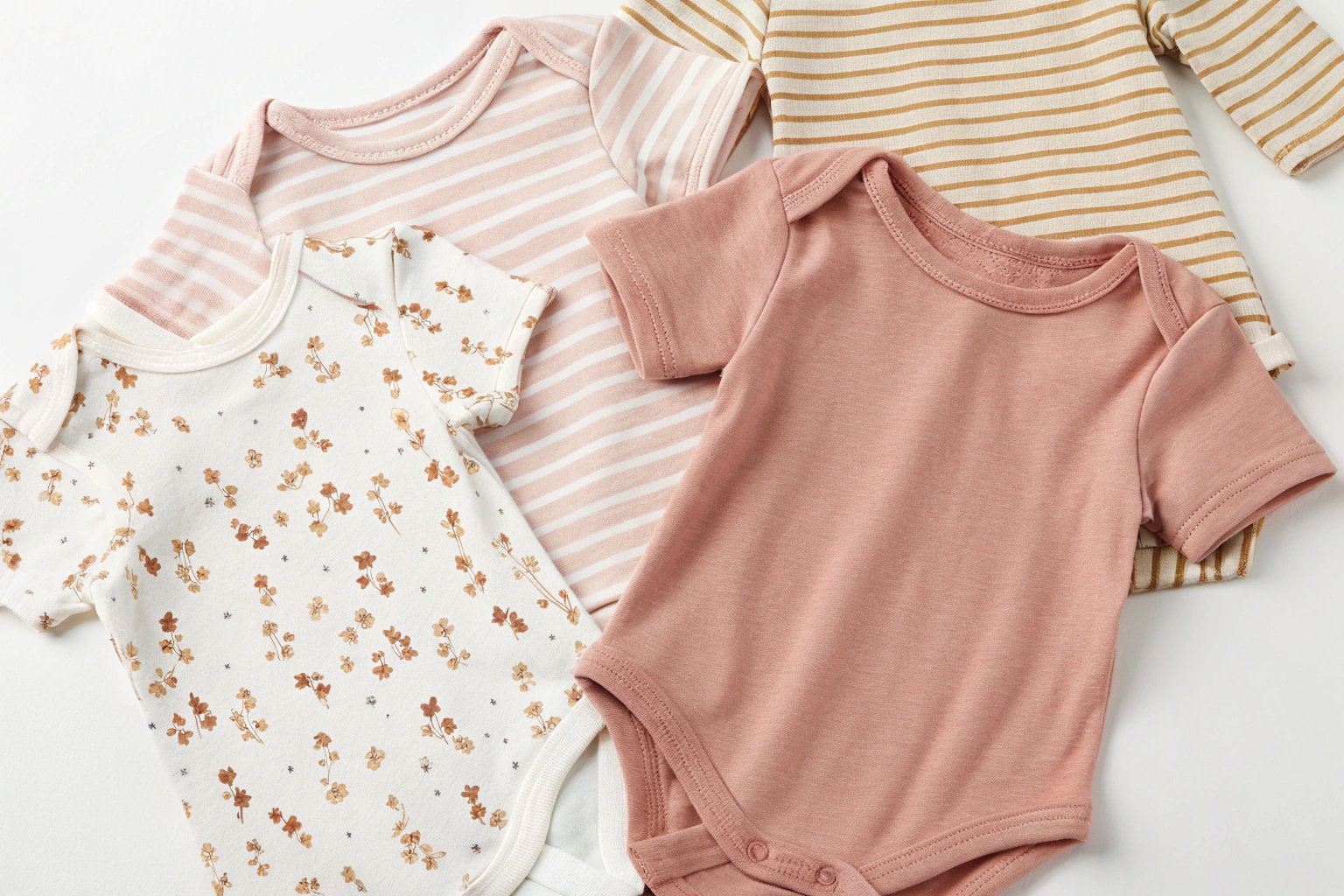Designing clothes for babies isn't just about cuteness—it's about fit, comfort, and flexibility for every little body. But how can you create tops that flatter and fit baby girls of all shapes?
To design baby girls’ tops for all body shapes, use soft, stretchy fabrics, size-inclusive patterns, and silhouettes that support movement while providing a good fit at the belly, shoulders, and neckline.
In this guide, I’ll walk you through silhouette strategies, size adjustments, comfort features, and fabric tips to help you design inclusive, stylish babywear that works for every baby girl.
Best Silhouettes for Different Baby Girl Body Types?
Babies come in all shapes—some have round bellies, others are longer in the torso, and some are petite overall. That’s why silhouette matters.
The best silhouettes for baby girls are those that provide space for diapers, allow movement, and don’t restrict growth. A-lines, empire waists, peplum tops, and raglan sleeves all work well across different body types.
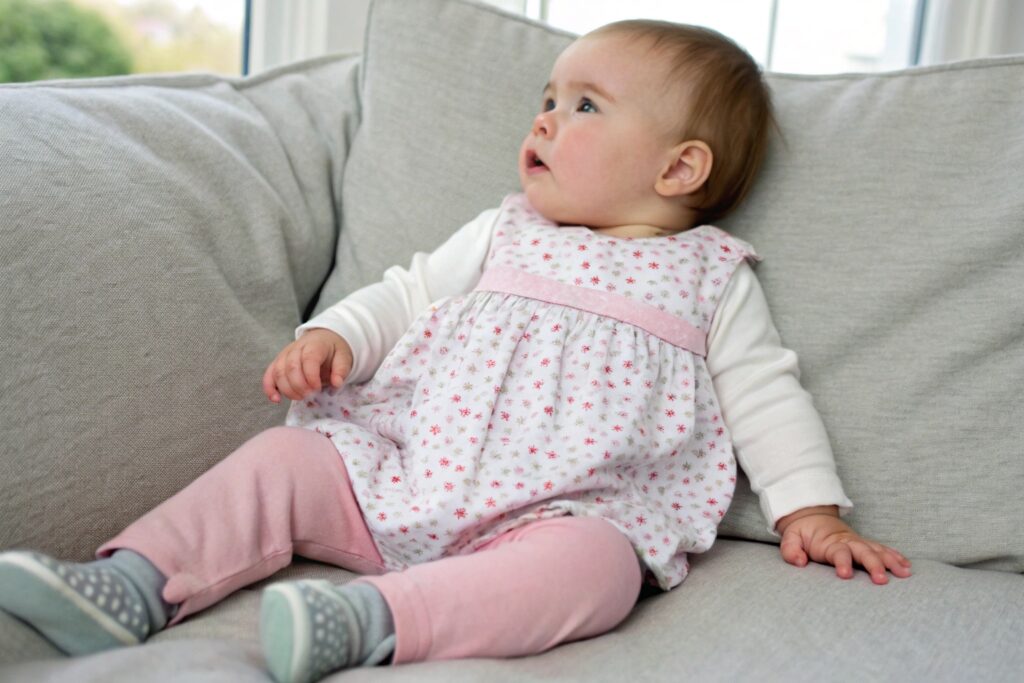
Popular silhouettes that work across body shapes:
| Silhouette | Why It Works |
|---|---|
| A-line | Skims the belly, roomy for diapers |
| Empire waist | Sits high on the chest, flatters round tummies |
| Raglan sleeve | Adds flexibility at the armhole |
| Peplum hem | Adds visual balance, soft on the tummy |
| Drop shoulder | Creates ease for wider arms and shoulders |
Considerations by body type:
- Rounder bellies: Avoid tight waistbands or elastic under the belly
- Long torsos: Add length to bodices or use drop-waist designs
- Petite frames: Keep sleeves and collars proportionally small
At Fumao, we help clients adjust base patterns to fit a range of baby shapes during the development phase—before finalizing bulk sizing.
How to Make Size-Inclusive Baby Girls’ Tops?
Standard baby sizes don’t fit all babies. Many parents struggle to find tops that fit wide or slim babies. So how do you solve that?
To make size-inclusive baby girls’ tops, offer wider size ranges, flexible pattern grading, and adjustable features like stretch necklines, wrap designs, and side openings.
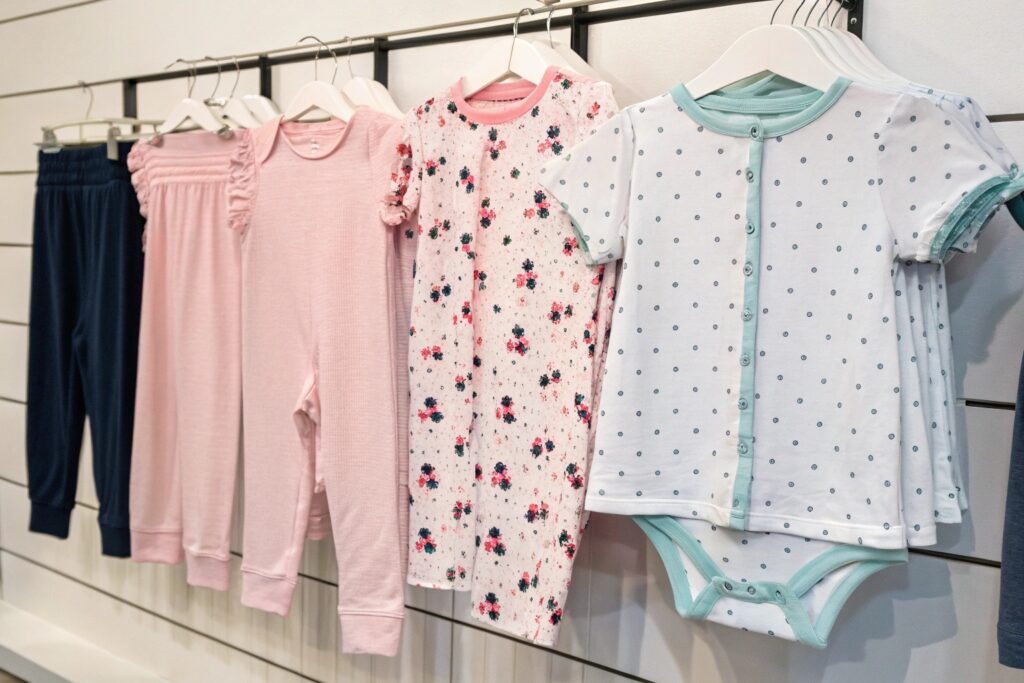
Steps to ensure inclusivity in sizing:
| Action | Outcome |
|---|---|
| Expand size chart | Add slim/plus options or in-between sizes |
| Use real baby fit models | Validate pattern adjustments |
| Add ease at key points | Ensures comfort at belly, chest, arms |
| Consider layered wear | Account for onesies or diapers underneath |
| Test multiple age/weight ranges | Ensures one size doesn't fit too tight |
Sizing examples beyond standard:
| Traditional Size | Expanded Inclusive Size Label |
|---|---|
| 6–9M | 6–9M Slim / 6–9M Plus Fit |
| 12–18M | 12–18M Tall / 12–18M Full Belly |
We encourage clients to include size guides based on weight and height, not just age, to help parents choose more accurately.
Design Details That Enhance Comfort and Fit?
The little things make a big difference—especially in babywear. From necklines to closures, comfort starts in the details.
Design details that improve comfort include envelope necklines, soft bindings, flat seams, longer back hems, and tag-free labels. These ensure tops adapt to babies’ movement without irritation.
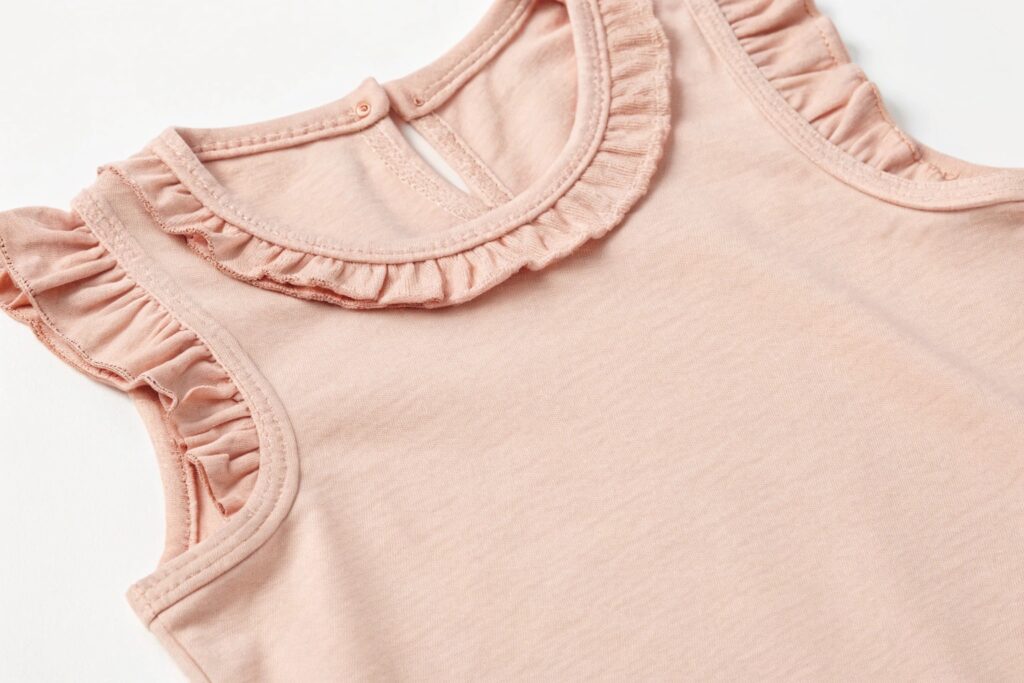
Essential design details for fit and comfort:
| Feature | Benefit |
|---|---|
| Envelope neckline | Easy to pull over head or down the body |
| Side snap or wrap top | No need to go over the head |
| Flatlock seams | No irritation or rubbing on delicate skin |
| Elasticated cuffs | Gentle hold without squeezing |
| Longer back hem | Covers diaper when baby bends or crawls |
Other smart design elements:
- Stretch neck ribbing that snaps back into shape
- Tagless printing instead of sewn labels
- Soft binding around sleeves and hem to prevent curling
At Fumao, our factory patterns for baby tops include these built-in comfort zones, tested on real babies before bulk production.
Fabric Choices That Flatter All Shapes?
You can have the best pattern in the world—but if the fabric is wrong, the garment won’t feel or look right.
The best fabrics for all baby shapes are soft, breathable, and stretchy—like organic cotton rib, jersey knit, interlock, and bamboo blends. These fabrics move with the baby and gently fit the body without clinging or riding up.
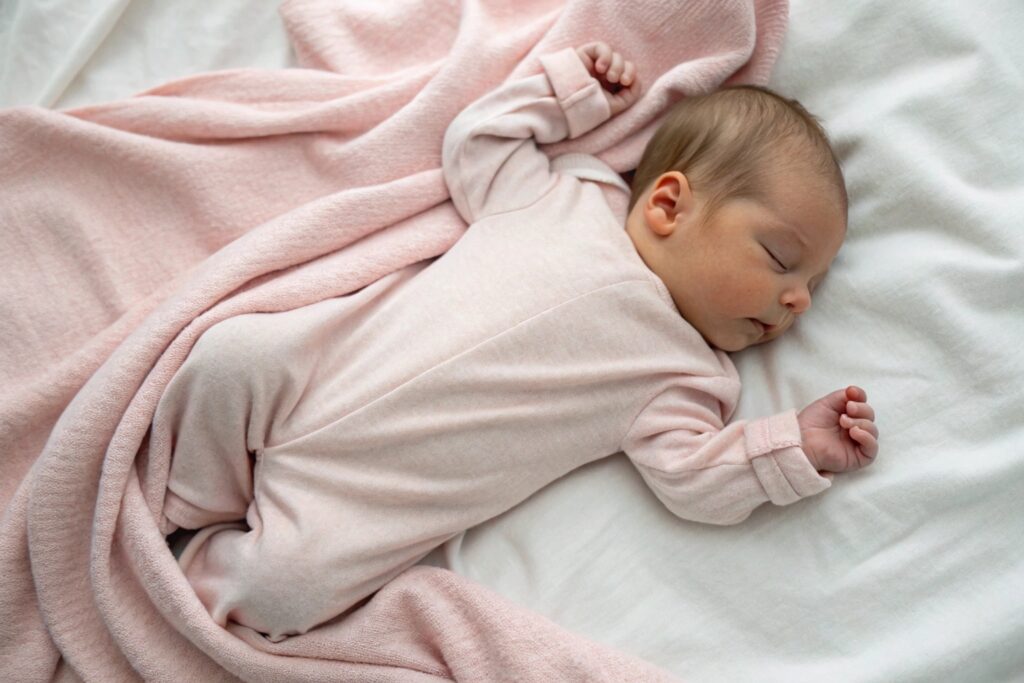
Best fabric types for baby tops:
| Fabric Type | Properties |
|---|---|
| Organic cotton jersey | Soft, breathable, natural feel |
| Cotton rib knit | Excellent stretch and recovery |
| Interlock cotton | Thicker, holds shape well |
| Bamboo viscose | Hypoallergenic, ultra-soft, moisture-wicking |
| Modal-cotton blend | Drapes beautifully, stays smooth |
What to avoid:
- Stiff woven fabrics for daily wear tops
- Polyester-heavy blends in warm climates
- Fabrics without certification (always ask for OEKO-TEX or GOTS)
Fabrics that hug but don’t squeeze, stretch but don’t warp, and breathe but don’t shrink are ideal for flattering all shapes.
Conclusion
Designing baby girls' tops for all body shapes means combining thoughtful silhouettes, flexible sizing, smart design details, and the right fabrics. With this approach, brands can offer garments that are not only cute—but genuinely comfortable, inclusive, and wearable for every baby.

